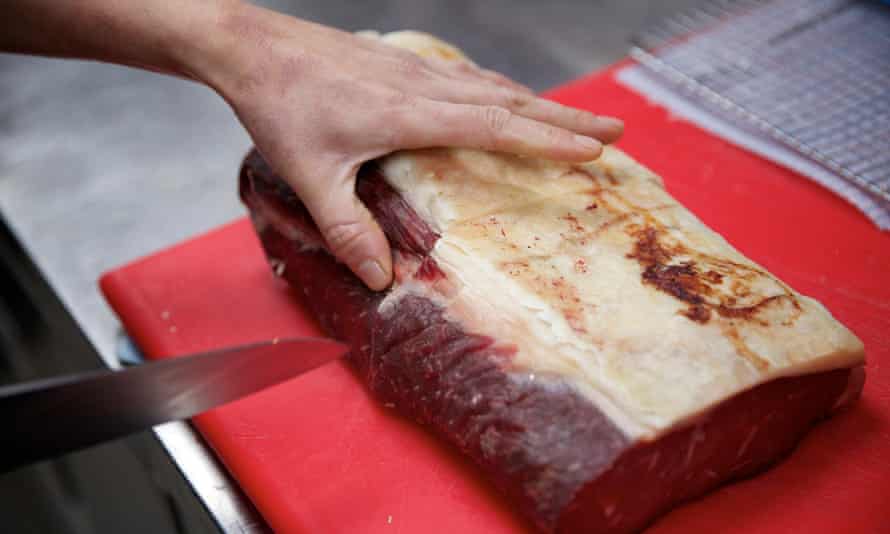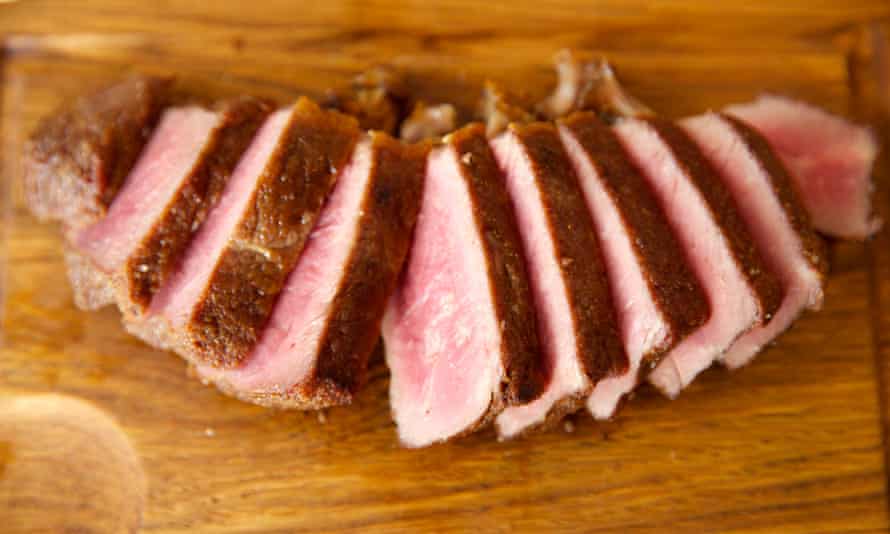Aged Ribeye Beef Tartare Walnut Street Cafe
Y ou know where you stand with steak, right? Twenty-eight-day aged beef is good. Get up to 35 or even 42 days of dry-ageing and, well, we're talking ribeye royalty. All that steak needs is béarnaise sauce and a pile of hot, rustling frites, and there you have it: perfection.
Except that, for certain chefs, enough is never enough. What happens if you age beef for 60 or 90 days, they ask? How magical would that meat be? And then they do it. Which explains why we are now in the midst of an international steak-based arms race – one which the Dallas Chop House may have already won over in Texas, after it served a (and no, this is not a typo) 459-day aged steak last year. Eleven Madison Park in New York, meanwhile, has served a comparatively callow 140-day aged steak on its tasting menu ("stunt beef", as one TripAdvisor wag had it).
In London, ageing lengths are creeping up (there is a grass-fed 55-day steak at Hawksmoor, and 70-day Danish beef at Mash in Soho), and the Canary Wharf branch of Goodman steakhouse has found a ready audience for its experiments in what executive chef Olly Bird calls "extreme ageing". Its latest 180-day aged rib should go on sale on Friday.

In Cumbria, James Cross is also pushing beef boundaries. As standard, his Ambleside restaurant, Lake Road Kitchen, serves steaks aged for 90 to 100 days, at which point: "There is a pronounced increase in the meat's flavour complexity." But Cross has also taken beef beyond 150 days, and he invited me to set a new Lake Road record by tasting his "specialist" 199-day aged beef.
Cross was first alerted to the possibilities of what Manhattan butcher George Faison once memorably described in Bon Appétit magazine as "controlled decomposition" (yummy, eh?) while working at New York's fabled restaurant Per Se, and later at Noma. The Copenhagen restaurant would hang whole carcasses of 13-year-old retired dairy cows for six months.
"It smells like roast beef when it's raw," enthuses Cross, who is now similarly excited about the truffle, blue cheese and umami flavours that develop in his steaks from 90 days onwards. Increased enzymatic activity in the meat breaks hitherto neutral molecules into myriad new flavours, which are intensified by the meat's moisture loss. In his kitchen, Cross strokes a striploin, revealing the mould blooms on the exterior fat, which add further character.

We begin on the nursery slopes, tasting a 79-day steak. Sweet, yielding and flavoursome, its buttery fat already packs a distinct blue cheese flavour (a classic steak combination). Cross is less impressed. "This isn't life-changing. It's very good beef, but we're looking for: 'Woah! What's going on?'"
At 99 days, you can taste what he means. The meat is dense, drier, less tender, but it has taken on a beautifully even char (watery meat twists as it cooks; it won't lie flat in the pan). It also bursts with flavour. Musky blue cheese notes run throughout the meat via its marbling, but without dominating its natural beefy character. The exterior fat is mineral, flinty. Altogether, it is a sensational mouthful. "It's clearly definable as steak," says Cross, "but we're getting towards a seriously complex bit of meat."
If the 99 is layered in its flavours, the 199 steak is explosive. As with the best charcuterie, everything is happening in your mouth all at once, but in a complementary, non-conflicting way. There is game-tinged beefiness in there; earthy, bosky flavours; ripe cheesiness; fatty, almost floral sweetness; chemical astringency. Like really strong, extra-matured cheese, this beef also leaves my tongue prickling with acidic compounds, to an almost overwhelming extent.

Afterwards, my head full of lingering fumes (you get a similar effect from inhaling pungent fresh truffles, Cross tells me), I could feel a distinct, chilli-like endorphin high coming on. "That," says Cross, chewing in a state of wonder, "is absolutely wild."
Which is why, despite the hassle and expense of maturing such meat (which costs £21.50/100g at Goodman), chefs will undoubtedly carry on doing it – using controversial grain-fed cattle, too. Grain-fed is the only beef that has the necessary marbling, without which the meat would dry out too quickly. Cross uses Belted Galloway beef from a semi-wooded Cumbrian farm where, after a varied natural diet, the cows are finished for six weeks on corn. That, he insists, is very different to "industrial-scale" US cattle farming: "I would not want to see millions of hectares of British farmland put over to growing corn to feed cows."
Cross sees his 150-plus-day steaks – so far only served to guinea pigs – as a future tasting menu item, which will be served in small portions with, say, a few pickled blueberrries. "For me, this is not a competition," he says. "The ageing is driven by one thing: a quality eating experience. Meat that age is a sensation overload; a couple of mouthfuls is adequate." It certainly is. This is meat which, even in such small quantities, will imprint itself on your memory. A full steak would leave many of us begging for mercy.
Source: https://www.theguardian.com/lifeandstyle/2015/mar/11/extreme-aged-steak-meat-with-mould-on-gourmet
0 Response to "Aged Ribeye Beef Tartare Walnut Street Cafe"
Post a Comment